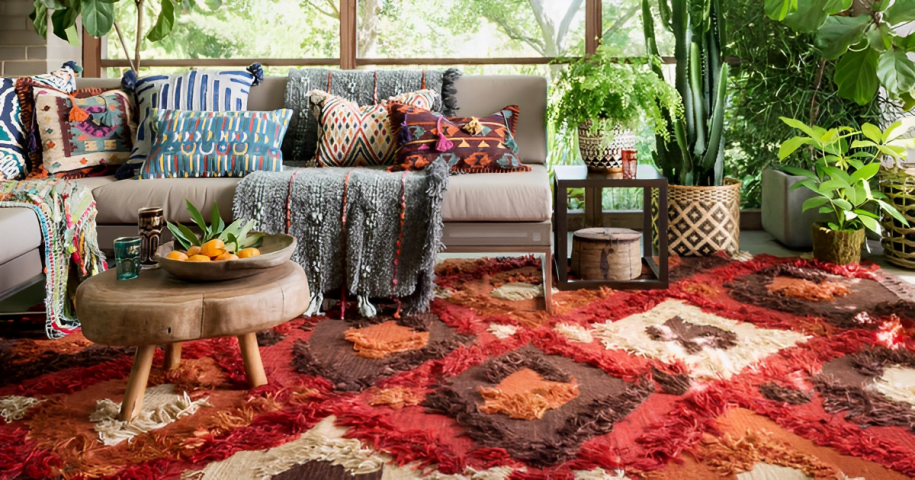Table of Contents
Delve into the intricate world of Moroccan Rugs and Moroccan Carpets and explore history as rich as the patterns woven into these traditional artifacts. From the snow-capped peaks of the High Atlas Mountains to the vast Sahara Desert, the story of Moroccan rugs is a journey of culture, heritage, and timeless style. In this comprehensive guide, we unravel the intricate knots and weaves of Moroccan carpets, unearthing the stories, techniques, and reasons why they are a sought-after piece of decor worldwide.
The Rich History of Moroccan Rugs and Moroccan Carpets
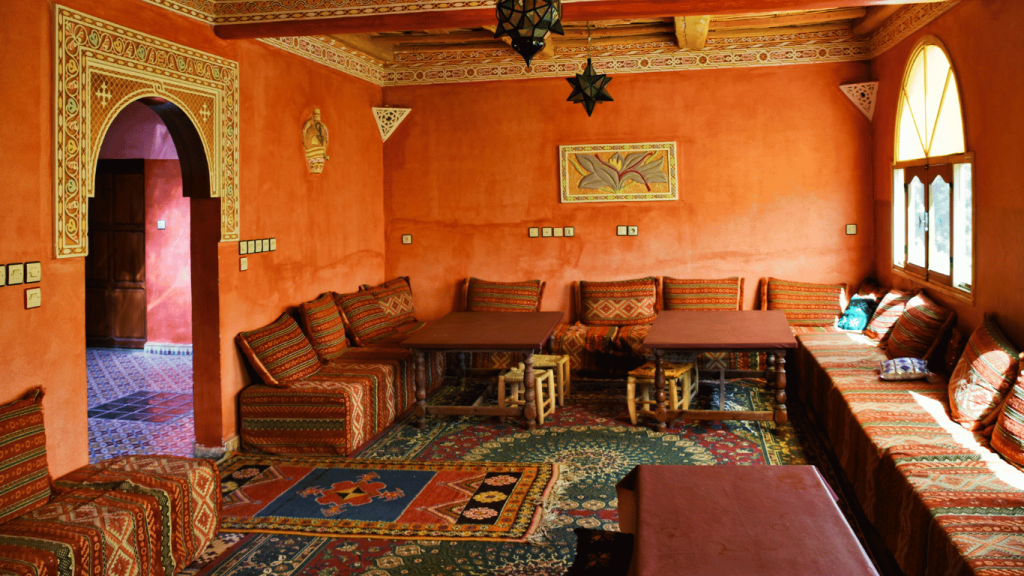
First, let’s embark on a historical journey that demonstrates the vast heritage behind Moroccan carpets. Rooted in the earliest Berber traditions, these rugs have been a staple in Moroccan homes for centuries. Initially woven for practical uses such as floor coverings, blankets, or saddle pads, they slowly transformed into artistic expressions of the weaver’s story, featuring symbols, colors, and patterns unique to the weaver’s tribe and region.
Different Types of Moroccan Rugs
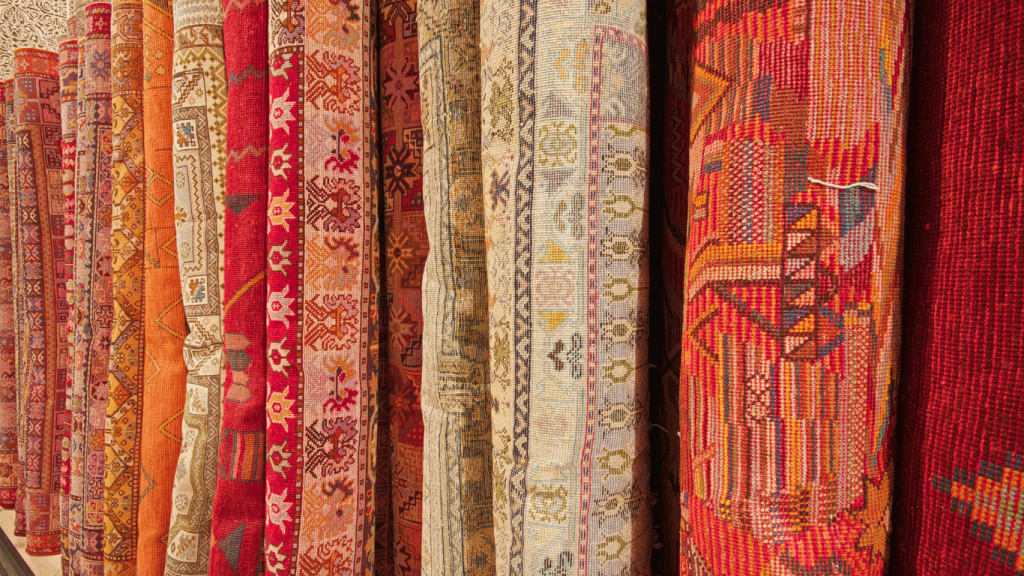
Next, let’s unravel the unique types of Moroccan rugs. Each rug comes from a distinct region in Morocco, with characteristic styles and weaving techniques that reflect the locale’s history and culture. Among the most popular are Beni Ourain, Azilal, Boucherouite, and Kilim rugs.
Beni Ourain Rugs
The Berber tribes of the same name craft the most renowned type, Beni Ourain rugs. Their simple, geometric designs and neutral tones gain widespread recognition as they weave these rugs from pure sheep wool, providing an incredibly soft and luxurious feel underfoot.
Azilal Rugs
Moving on to Azilal rugs, they hail from the high Atlas Mountains and are recognized for their vibrant colors and abstract patterns, a stark contrast to the subdued elegance of Beni Ourain rugs. Intricate, eccentric, and dazzling, these rugs are hand-woven by Berber women, with each rug telling a unique story.
Boucherouite Rugs
Boucherouite rugs are an enchanting mix of recycled textiles, embracing sustainability long before it became trendy. These “rag rugs” burst with color, creativity, and charisma, featuring a patchwork design that’s both modern and deeply rooted in tradition.
Kilim Rugs
Finally, we have the Kilim rugs, which are flat-woven without the typical pile associated with other rugs. They are lightweight, versatile, and feature striking geometric designs, making them a favorite choice for wall hangings or floor coverings.
Moroccan Rug Weaving Techniques
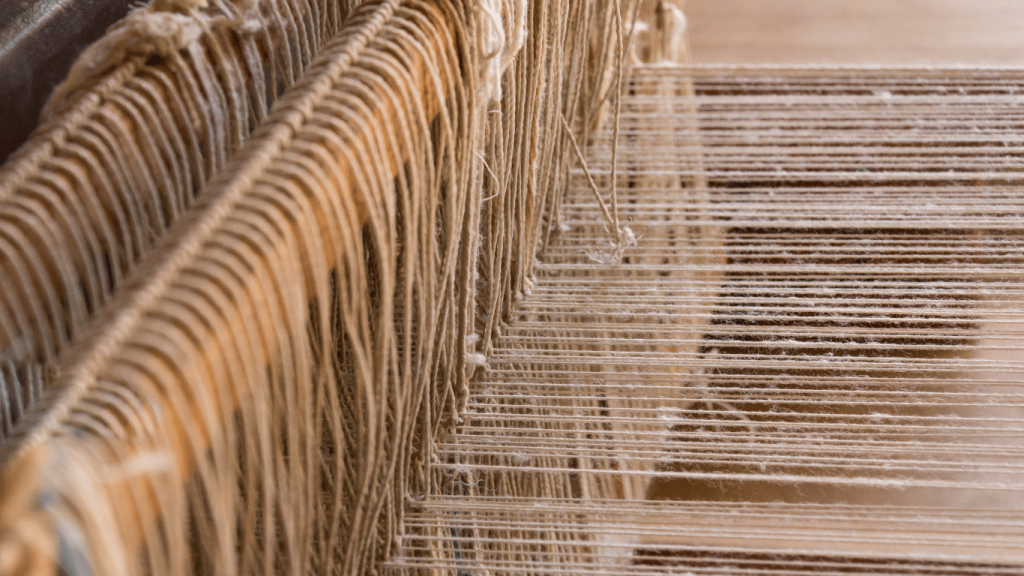
Understanding the rug’s structure requires appreciating the labor-intensive process and the exceptional weaving techniques employed by the weavers. These techniques are usually passed down from generation to generation, preserving the essence of the Moroccan tradition and culture.
Decoding the Symbols in Moroccan Rugs
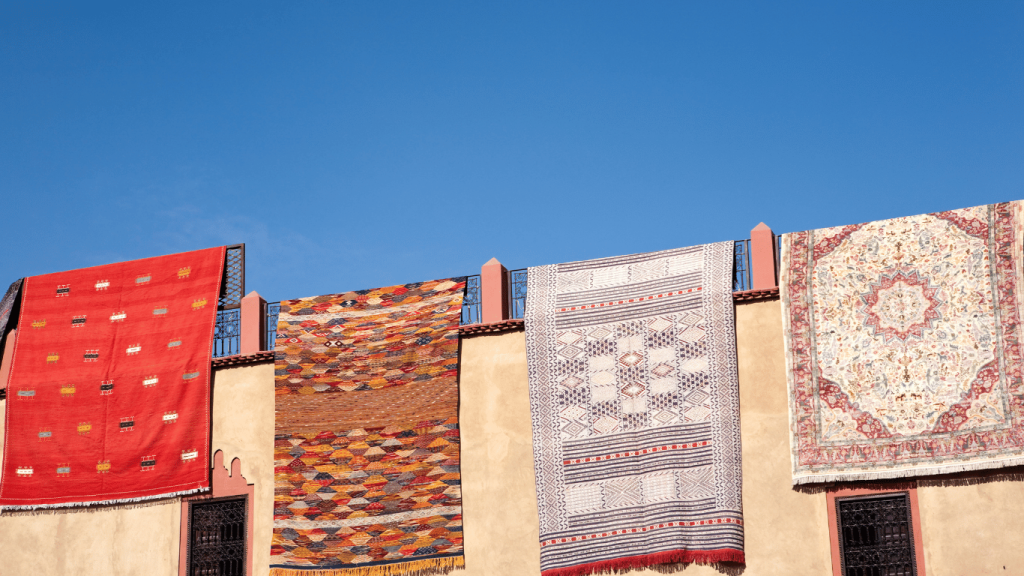
Another fascinating aspect of Moroccan rugs is their symbolic language. Every color, pattern, and motif has a meaning, allowing the rug to narrate stories of tradition, beliefs, and the weaver’s personal experiences. Decoding these symbols offers a deeper understanding and appreciation for these handcrafted works of art.
The Influence of Moroccan Rugs on Interior Design
Moroccan rugs have significantly influenced interior design worldwide, prized for their authenticity, charm, and versatility. Whether in minimalist, bohemian, or eclectic settings, these rugs add warmth, texture, and a splash of exotic allure to any space.
How to Choose the Right Moroccan Rug
Choosing the right Moroccan rug for your space involves considering factors such as size, color, pattern, and style. Knowing where the rug comes from and the story behind its design can also add to its charm and value.
How to Care for Your Moroccan Rug
Once you’ve selected your perfect piece, knowing how to care for your Moroccan rug is essential to maintaining its beauty and longevity. From regular vacuuming to professional cleaning and repair, we’ll cover the best practices in rug maintenance.
Ethical Considerations When Purchasing Moroccan Rugs
Lastly, but importantly, buying a Moroccan rug comes with certain ethical considerations. It’s crucial to ensure rugs are sourced responsibly, the artisans are fairly compensated, and traditional craftsmanship is respected and preserved.
Conclusion
Moroccan carpets and rugs embody centuries-old traditions, weaving the weaver’s life and heritage into an artistic expression. They transcend mere decoration, immersing you in the heart of Moroccan culture. Whether it’s the elegant simplicity of Beni Ourain, the vibrant colors of Azilal, the sustainable charm of Boucherouite, or the geometric allure of Kilim rugs, owning one means owning a piece of history, a story woven in wool. Care for it, and it will grace your space with warmth, beauty, and a unique cultural narrative.

